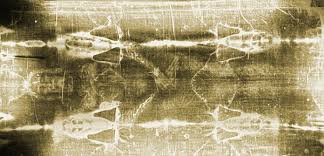|
|
|
|
|
|
From The Image of Christ, ed. :
THE supposed origin [of images] in direct contact with the body of Christ is of course shared by the miraculous image that has now eclipsed both the Mandylion and Veronica to become probably the most famous relic in Christendom, the Turin Shroud. This fourteen-foot length of cloth which is believed by many to be the Shroud in which Christ’s dead body was wrapped and on which his image was mysteriously imprinted, has apparently been shown by Carbon-14 dating to have originated between 1260 and 1390. It was first recorded at the end of the fourteenth century when Pierre d’Arcis, Bishop of Troyes, wrote in fury to the Pope describing a cloth ‘cunningly painted’ which some clergy in his diocese were pretending was the true Shroud of Christ, ‘not from any motive of devotion but only of gain’. From these unpromising beginnings the Shroud’s reputation has steadily grown, receiving its biggest boost in 1898 when it was photographed. This revealed that it is as a ‘negative’ that the image on the Shroud appears most clearly – and it is indeed as a negative image that the Shroud is now most familiar. It is also the devotion afforded the Shroud today – both as a relic touched by Christ and as a ‘true likeness’ – that gives us the clearest glimpse of how the Veronica and Mandylion were once viewed and venerated.
 |
|
|
|
|
Dürer, c.1510 |
Montepello |
This Webpage was created for a workshop held at Saint Andrew's Abbey, Valyermo, California in 2004